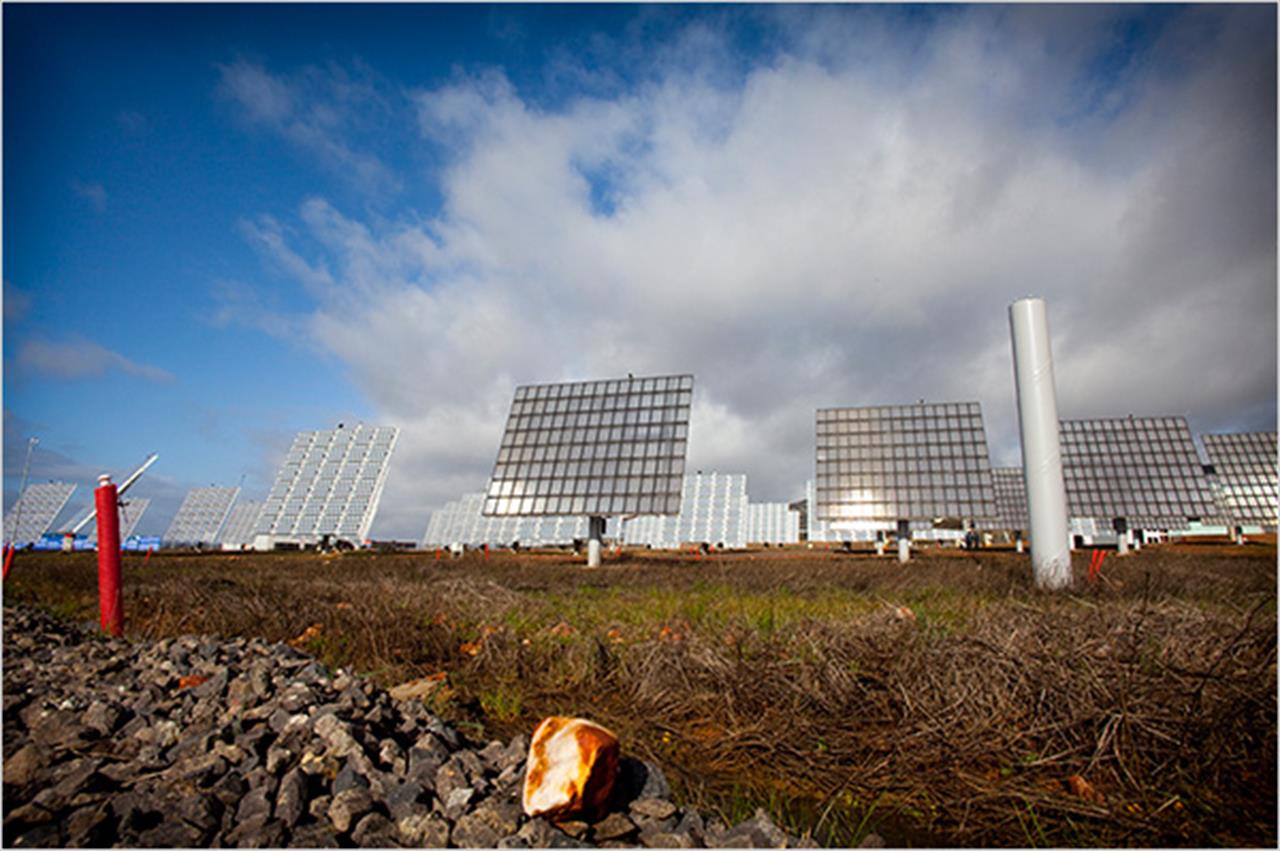Sostenibilità
Moved by the sun
What can be learned from Puertollano's booming solar industry gone bust
di Staff

Two years ago, this gritty mining city hosted a brief 21st-century gold rush. Long famous for coal, Puertollano discovered another energy source it had overlooked: the relentless, scorching sun.
Armed with generous incentives from the Spanish government to jump-start a national solar energy industry, the city set out to replace its failing coal economy by attracting solar companies, with a campaign slogan: “The Sun Moves Us.”
Soon, Puertollano, home to the Museum of the Mining Industry, had two enormous solar power plants, factories making solar panels and silicon wafers, and clean energy research institutes. Half the solar power installed globally in 2008 was installed in Spain.
Farmers sold land for solar plants. Boutiques opened. And people from all over the world, seeing business opportunities, moved to the city, which had suffered from 20 percent unemployment and a population exodus.
But as low-quality, poorly designed solar plants sprang up on Spain’s plateaus, Spanish officials came to realize that they would have to subsidize many of them indefinitely, and that the industry they had created might never produce efficient green energy on its own.
In September the government abruptly changed course, cutting payments and capping solar construction. Puertollano’s brief boom turned bust. Factories and stores shut, thousands of workers lost jobs, foreign companies and banks abandoned contracts that had already been negotiated.
“We lost the opportunity to be at the vanguard of renewables — we were not only generating electricity, but also a strong economy,” said Joaquín Carlos Hermoso Murillo, Puertollano’s mayor since 2004. “Why are they limiting solar power, when the sun is unlimited?”
Puertollano’s wrenching fall points to the delicate policy calculations needed to stimulate nascent solar industries and create green jobs, and might serve as a cautionary tale for the United States, where a similar exercise is now under way.
For now, electricity generation from the sun’s rays needs to be subsidized because it requires the purchase of new equipment and investment in evolving technologies. But costs are rapidly dropping. And regulators are still learning how to structure stimulus payments so that they yield a stable green industry that supports itself, rather than just costly energy and an economic flash in the pan like Spain’s.
“The industry as a whole learned a lot from what happened in Spain,” said Cassidy DeLine, who analyzes the European solar market for Emerging Energy Research, a firm based in Cambridge, Mass. She noted that other countries had since set subsidies lower and issued stricter standards for solar plants.
Yet, despite the pain that Spain’s incentives ended up causing, in many ways they fulfilled their promise, Ms. DeLine said.
“Even though incentives can create bubbles and bursts, without them this industry won’t take off,” she said. “The U.S. is really behind Europe on this, and if we wait until solar is cost-competitive on its own, we may miss the boat and an opportunity to shape the market.”
The most robust Spanish solar companies survived the downturn, have restructured and are re-emerging as global players.
For example, when the government changed course, Siliken Renewable Energy, originally a producer of solar panels, shut its factories for five months and cut its staff to 600 from 1,200. But after shifting its focus to external markets like Italy, France and the United States, and diversifying into solar support services, the company now turns a profit.
“We were a company that banks trusted, so we could make the shift,” said Antonio Navarro, a company spokesman. “But a lot of little companies disappeared.”
The period was particularly difficult because it coincided with the global economic crisis, he said.
To encourage development of solar power and reduce dependence on fossil fuels, Europe has generally relied on so-called feed-in tariffs, through which governments pay a hefty premium for electricity from renewable resources. Regulators in the United States have favored less direct incentives like requiring municipalities to buy a percentage of their electricity from companies making renewable energy, although a few cities and states, most notably Vermont, are experimenting with the feed-in concept.
When it was announced in the summer of 2007, Spain’s premium payment for solar power was the most generous anywhere — 58 cents per kilowatt-hour — with few strings attached.
In retrospect it was far too high. “Everyone from all over the world was installing in Spain as fast as they could, and every biologist who could add was working in solar,” said Pedro Banda, director general of the Institute of Concentration Photovoltaic Systems, one of the research institutes in Puertollano.
Even inefficient, poorly designed plants could make a profit, and speculation in solar building permits was common.
Although Spain’s long-term goal had been to produce 400 megawatts of electricity from solar panels by 2010, it reached that milestone by the end of 2007.
In 2008 the nation connected 2.5 gigawatts of solar power into its grid, more than quintupling its previous capacity and making it second to Germany, the world leader. But many of the hastily opened plants offered no hope of being cost-competitive with conventional power, being poorly designed or located where sunshine was inadequate, for example.
Designs for solar power plants vary. The most common type uses photovoltaic panels to generate electricity. Others, called thermal solar plants, use mirrors to focus the sun’s energy on a liquid that, when heated, drives a steam turbine.
In its haste to create a solar industry, Spain made some miscalculations: solar plants can be set up so quickly and easily that the rush into the industry was much faster than anticipated. And the lavish subsidies inflated Spanish solar installation costs at a time when they were rapidly decreasing elsewhere — in part because of increasing competition from panel makers in China, but also because higher volumes produced economies of scale.
In Spain, the tariff, now adjusted quarterly, is about 39 cents per kilowatt-hour for electricity from freestanding solar power plants, and slightly higher for panels on rooftops.
Germany’s tariff, 53 cents per kilowatt-hour, is expected to fall at least 15 percent this summer, and there are proposals before Parliament to eliminate subsidies for solar plants on farmland.
The bonus payments required to make solar energy financially viable vary, depending on local sunshine and the cost of conventional energy. Experts predict that, possibly by next year, Italy will be the first place where solar-generated electricity will not need subsidies to compete with electricity from fossil fuel. Italy has abundant sun and sky-high energy rates, given that it imports most of its fossil fuel.
Even with the reduced incentives and local economic downturn, the solar industry gave Puertollano something of a face-lift and, potentially, a new economic future. Research institutes there are developing cutting-edge technologies. Unemployment, though now up around 10 percent, has not returned to the 20 percent figure. The city is home to a number of solar businesses: a new 50-megawatt thermal-solar plant owned by the Spanish energy giant Iberdrola created hundreds of jobs.
Although coal mines still dot the landscape and a petrochemical factory remains one of Puertollano’s largest employers, that new solar plant sits just next door, with more than 100,000 parabolic mirrors in neat rows on about 400 acres of former farmland. Clean and white as a hospital ward, it silently turns sunshine into Spanish electricity.
Source: The New York Times
17 centesimi al giorno sono troppi?
Poco più di un euro a settimana, un caffè al bar o forse meno. 60 euro l’anno per tutti i contenuti di VITA, gli articoli online senza pubblicità, i magazine, le newsletter, i podcast, le infografiche e i libri digitali. Ma soprattutto per aiutarci a raccontare il sociale con sempre maggiore forza e incisività.
